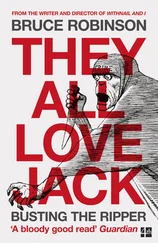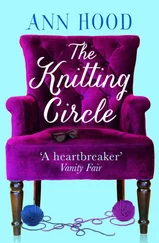Bruce Hood - The Self Illusion
Здесь есть возможность читать онлайн «Bruce Hood - The Self Illusion» весь текст электронной книги совершенно бесплатно (целиком полную версию без сокращений). В некоторых случаях можно слушать аудио, скачать через торрент в формате fb2 и присутствует краткое содержание. ISBN: , Издательство: Constable & Robinson, Жанр: Старинная литература, на английском языке. Описание произведения, (предисловие) а так же отзывы посетителей доступны на портале библиотеки ЛибКат.
- Название:The Self Illusion
- Автор:
- Издательство:Constable & Robinson
- Жанр:
- Год:неизвестен
- ISBN:9781780331379
- Рейтинг книги:5 / 5. Голосов: 1
-
Избранное:Добавить в избранное
- Отзывы:
-
Ваша оценка:
- 100
- 1
- 2
- 3
- 4
- 5
The Self Illusion: краткое содержание, описание и аннотация
Предлагаем к чтению аннотацию, описание, краткое содержание или предисловие (зависит от того, что написал сам автор книги «The Self Illusion»). Если вы не нашли необходимую информацию о книге — напишите в комментариях, мы постараемся отыскать её.
The Self Illusion — читать онлайн бесплатно полную книгу (весь текст) целиком
Ниже представлен текст книги, разбитый по страницам. Система сохранения места последней прочитанной страницы, позволяет с удобством читать онлайн бесплатно книгу «The Self Illusion», без необходимости каждый раз заново искать на чём Вы остановились. Поставьте закладку, и сможете в любой момент перейти на страницу, на которой закончили чтение.
Интервал:
Закладка:
5. A. J. Barnier, R. E. Cox, M. Connors, R. Langdon and M. Coltheart, ‘A stranger in the looking glass: Developing and challenging a hypnotic mirrored-self misidentification delusion’, International Journal of Clinical and Experimental Hypnosis , 59 (2011), 1–26.
6. G. B. Caputo, ‘Strange-face-in-the-mirror illusion’, Perception , 39 (2010), 1007–8.
7. G. G. Gallup, ‘Chimpanzees: Self-recognition’, Science , 167 (1970), 86–7.
8. B. I. Bertenthal and K. W. Fischer, ‘Development of self-recognition in the infant’, Developmental Psychology , 14 (1978), 44–50.
9. P. Rochat, Others in Mind: Social Origins of Self-Consciousness (Cambridge: Cambridge University Press, 2009).
10. D. Bruce, A. Dolan and K. Phillips-Grant, ‘On the transition from childhood amnesia to the recall of personal memories’, Psychological Science ,11 (2000),360–64.
11. M. J. Eacott, ‘Memory for the events of early childhood’, Current Directions in Psychological Sciences , 8 (1999), 46–9.
12. D. Wearing, Forever Today: A Memoir of Love and Amnesia (London: Doubleday, 2005).
13. Wearing (2005), 158.
14. J. Piaget, The Child’s Construction of Reality (London: Routledge and Kegan Paul, 1955).
15. C. Rovee and D. T. Rovee, ‘Conjugate reinforcement of infant exploratory behavior’, Journal of Experimental Child Psychology , 8 (1969), 33–9.
16. D. B. Mitchell, ‘Nonconscious priming after 17 years: Invulnerable implicit memory?’, Psychological Science , 17 (2006), 925–9.
17. E. Tulving, Elements of Episodic Memory (Oxford: Clarendon Press, 1983).
18. M. A. Conway and C. W. Pleydell-Pearce, ‘The construction of autobiographical memories in the self-memory system’, Psychological Review , 107 (2000), 261–88.
19. H. L. Roediger III and K. B. McDermott, ‘Tricks of memory’, Current Directions in Psychological Science , 9 (2000), 123–7.
20. F. C. Bartlett, Remembering (Cambridge, England: Cambridge University Press, 1932).
21. E. F. Loftus, ‘Leading questions and eyewitness report’, Cognitive Psychology , 7 (1975), 560–72.
22. E. F. Loftus, ‘Lost in the mall: Misrepresentations and misunderstandings’, Ethics and Behaviour , 9 (1999), 51–60.
23. The story of Piaget’s false memory can be found in C. Tavris, ‘Hysteria and the incest-survivor machine’, Sacramento Bee , Forum section (17 January 1993).
24. K. A. Wade, M. Garry, J. D. Read and D. S. Lindsay, ‘A picture is worth a thousand lies: Using false photographs to create false childhood memories’, Psychonomic Bulletin and Review , 9 (2002), 597–603.
25. Loftus’s recollection of this incident is found in J. Neimark, ‘The diva of disclosure, memory researcher Elizabeth Loftus’, Psychology Today , 29 (1996), 48.
26. D. J. Simons and C. F. Chabris, ‘What people believe about how memory works: A representative survey of the US population’, PLoS ONE , 6: 8 (2011): e22757, doi:10.1371/journal.pone.0022757.
27. W. L. Randall, ‘From compost to computer: Rethinking our metaphors for memory’, Theory Psychology , 17 (2007), 611–33.
28. Simons, quoted in K. Harmon, ‘4 things most people get wrong about memory’, Scientific American (4 August 2011), http://blogs.scientificamerican.com/observations/2011/08/04/4-things-most-people-get-wrong-about-memory.
29. P. K. Dick, ‘We can remember it for you wholesale’, Magazine of Fantasy and Science Fiction (April 1966).
30. Total Recall (1990), directed by Paul Verhoeven.
31. K. Tustin and H. Hayne, ‘Defining the boundary: Age-related changes in childhood amnesia’, Developmental Psychology , 46 (2010), 1049–61.
32. M. L. Howe and M. L. Courage, ‘On resolving the enigma of infantile amnesia’, Psychological Bulletin , 113 (1993), 305–326.
33. Rochat (2009).
34. D. Premack and G. Woodruff, ‘Does the chimpanzee have a theory of mind?’, Behavioral and Brain Sciences , 1 (1978), 515–26.
35. The story of Binti is told in S. Budiansky, ‘Still red tooth and claw’, Wall Street Journal (12 March 1978).
36. Studies of gaze following indicate that this is present early and may even be innate. See, for example, B. M. Hood, J. D. Willen and J. Driver, ‘An eye direction detector triggers shifts of visual attention in human infants’, Psychological Science , 9 (1998), 53–6.
37. A. Phillips, H. M. Wellman and E. S. Spelke, ‘Infants’ ability to connect gaze and emotional expression to intentional action’, Cognition , 85 (2002), 53–78.
38. B. M. Repacholi and A. Gopnik, ‘Early reasoning about desires: Evidence from 14- and 18-month-olds’, Developmental Psychology , 33 (1997), 12–21.
39. D. J. Povinelli and T. J. Eddy, What Chimpanzees Know about Seeing , Monographs of the Society of Research in Child Development 61:2:247 (Boston, MA: Blackwell, 1996).
40. D. Dennett, ‘Beliefs about beliefs’, Behavioral and Brain Sciences , 1 (1978), 568–70.
41. A. Gopnik and J. W. Astington, ‘Children’s understanding of representational change and its relation to the understanding of false belief and the appearance reality distinction’, Child Development , 59 (1988), 26–37.
42. H. Wimmer and J. Perner, ‘Beliefs about beliefs: Representations and constraining function of wrong beliefs in young children’s understanding of deception’, Cognition , 13 (1983), 103–128.
43. A. Gopnik (2009) The Philosophical Baby; What Children’s Minds Tell us About Truth, Love, and the Meaning of Life . Farrar, Straw & Gironx, NY.
44. A. McAlister and C. Peterson, ‘A longitudinal study of child siblings and theory of mind development’, Cognitive Development , 22 (2007), 258–70.
45. C. Keysers, The Empathic Brain (Los Gatos, CA: Smashwords e-book, 2011).
46. C. J. Newschaffer, L. A. Croen and J. Daniels et al., ‘The epidemiology of autism spectrum disorders’, Annual Review of Public Health , 28 (2007), 235–58.
47. U. Frith, Autism: Explaining the Enigma (2nd ed., Oxford: Wiley-Blackwell, 2003).
48. S. Baron-Cohen, Mindblindness: An Essay on Autism and Theory of Mind (Cambridge, MA: MIT Press, 1995).
49. A. Gopnik, ‘Mindblindness’ (Unpublished essay. Berkeley, CA: University of California, 1993).
50. M. S. Helt, I. Eigsti, P. J. Snyder and D. A. Fein, ‘Contagious yawning in autistic and typical development’, Child Development , 81 (2010), 1620–31.
51. T. Grandin, The Way I See It (2nd ed., Arlington, TX: Future Horizons, 2011).
52. O. Sacks, An Anthropologist on Mars: Seven Paradoxical Tales (New York, NY: Vintage, 1996).
53. A. Bailey, A. Le Couteur, I. Gottesman, P. Bolton, E. Simonoff, E. Yuzda and M. Rutter, ‘Autism as a strongly genetic disorder: Evidence from a British twin study’, Psychological Medicine , 25 (1995), 63–77.
54. J. H. Pfeifer, M. Iacoboni, J. C. Mazziotta and M. Dapretto, ‘Mirroring others’ emotions relates to empathy and interpersonal competence in children’, Neuroimage ,15 (2008), 2076–85; M. Dapretto, M. S. Davies, J. H. Pfeifer, M. Sigman, M. Iacoboni, S. Y. Bookheimer et al., ‘Understanding emotions in others: Mirror neuron dysfunction in children with autism spectrum disorders’, Nature Neuroscience , 9 (2006), 28–30.
55. J. A. Bastiaansen, M. Thioux, L. Nanetti, C. van der Gaag, C. Ketelaars, R. Minderaa and C. Keysers, ‘Age-related increase in inferior frontal gyrus activity and social functioning in autism spectrum disorder’, Biological Psychiatry , 69 (2011), 832–8.
Читать дальшеИнтервал:
Закладка:
Похожие книги на «The Self Illusion»
Представляем Вашему вниманию похожие книги на «The Self Illusion» списком для выбора. Мы отобрали схожую по названию и смыслу литературу в надежде предоставить читателям больше вариантов отыскать новые, интересные, ещё непрочитанные произведения.
Обсуждение, отзывы о книге «The Self Illusion» и просто собственные мнения читателей. Оставьте ваши комментарии, напишите, что Вы думаете о произведении, его смысле или главных героях. Укажите что конкретно понравилось, а что нет, и почему Вы так считаете.












